
views
Performing First Aid

Check for possible dangers before taking action. Before you approach a collapsed or unconscious person, quickly assess the situation to determine if you can approach them safely. For example, check the area for hazards such as a downed electrical wire, fire or smoke, or toxic gas. Don’t try to touch the person or get close to them if you don’t think you can do so safely.Tip: If the person is in a hazardous area (such as in the middle of a road) but you think you can safely approach them, try to quickly but gently move them to safety. Use caution if you think the person might be drunk or under the influence of drugs, since they could react violently if you disturb them. If you don’t think you can approach safely, call emergency services and explain the situation. Wait nearby until help arrives.
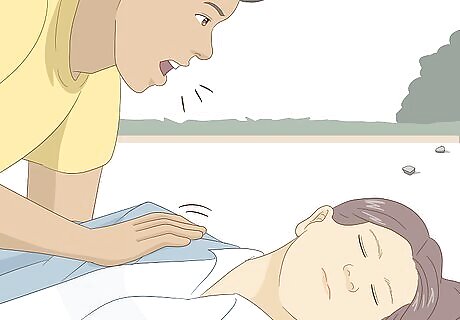
Try to get the person to respond to you. If you feel confident that you can safely approach the person, check to see if they are conscious. Shout to get their attention, and say their name if you know it. You can also try gently shaking or tapping their shoulder. Say something like, “Are you all right?” A person is considered “unresponsive” if they don’t move or react in any way to stimulation from the outside, such as sound, touch, or strong smells.
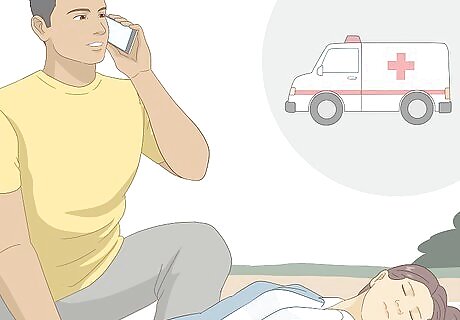
Call for help immediately if the person is unresponsive. If the person shows no sign of consciousness, call emergency services immediately. Keep them on the line so that they can talk you through what to do until help arrives. Ask someone else to assist you if possible. For example, they can make the call or go look for help while you stay with the person and attempt CPR.
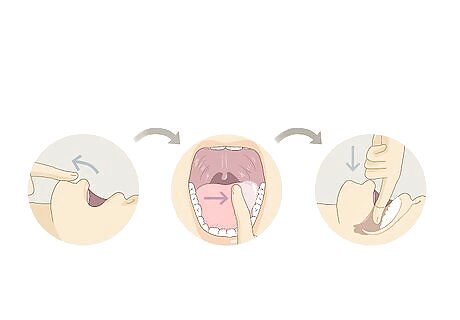
Open the person’s mouth and check their airway. Once you’ve called for help, carefully tilt the person’s head back and look inside their mouth. If you see any fluid or foreign objects in their mouth or throat, roll them onto their side and swipe your fingers across the back of their throat to clear away anything that’s stuck there. If there’s something in the airway but you can’t remove it quickly and easily, move on to doing chest compressions. Chest compressions can help dislodge material stuck in the airway.
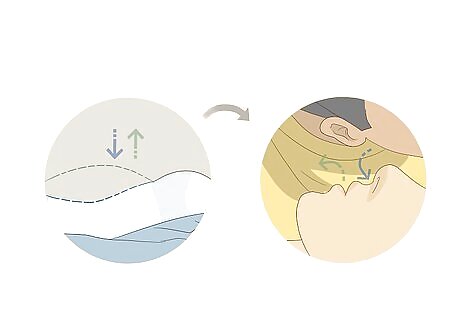
Look for signs of breathing. After checking the airway, see if the person is breathing normally. To check for breathing, first look to see if the person’s chest is rising and falling. If you can’t see their chest moving, put your ear over their mouth and nose. Listen for sounds of breathing and see if you can feel their breath on your cheek for at least 10 seconds. If the person is gasping, choking, or breathing irregularly, this means they are alive but not breathing normally. If the person is not breathing or if their breathing is abnormal, you’ll need to perform CPR.
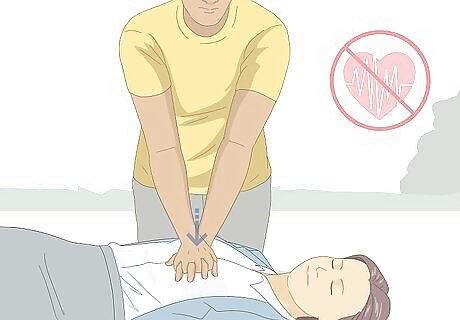
Perform CPR if the person isn’t breathing or if they’re breathing abnormally. Place the person on their back on a firm surface and kneel by their neck and shoulders. Then, check their pulse for 5-10 seconds. If they don't have a pulse, place the heel of one of your hands in the middle of their chest, between their nipples, and put your other hand on top of the first hand. Keep your elbows locked and your shoulders directly above your hands. Use your upper body weight to compress their chest 30 times, followed by 2 breaths. Do this for 5 cycles, then check their pulse again. If you haven’t been trained in CPR, stick to performing chest compressions (hands-only CPR). If the person has a pulse, only give them rescue breaths. Give them 10 rescue breaths per minute and check their pulse every 2 minutes. Aim to push their chest down to a depth of between 2 and 2.4 inches (5.1 and 6.1 cm). Try to do 100-120 compressions per minute. Don’t stop doing chest compressions until help arrives or the person starts moving and breathing on their own. If you’re trained in CPR, check the person’s airway after every 30 chest compressions and give them 2 rescue breaths before going back to chest compressions.
Recognizing Signs of Death
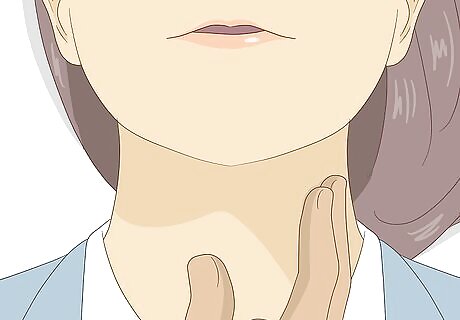
Look for a loss of pulse and breathing. A lack of pulse (heartbeat) and respiration (breathing) are 2 of the most obvious signs of death. If you think a person may have died, check these vital signs first. However, keep in mind that it can be difficult to be sure if a person’s heartbeat and breathing have really stopped without medical equipment. Remember to look, listen, and feel for signs of breathing. To check for a pulse, lift the person’s chin and feel for their Adam’s apple (or voice box). From there, slide your fingers into the groove between the Adam’s apple and one of the large tendons on either side of the neck. If the person has a pulse, you should feel a rhythmic throbbing under your fingers.
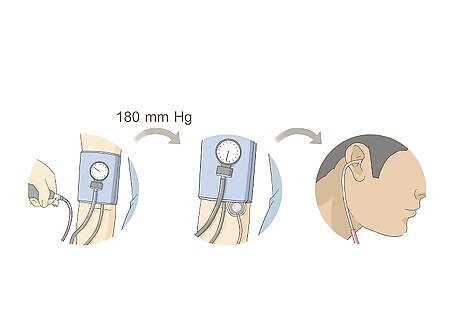
Check for inaudible blood pressure if you have a cuff and stethoscope. If you have a stethoscope and blood pressure cuff available, you can also listen for the sound of the person’s systolic blood pressure. Place the cuff on the person’s arm just above the elbow joint and inflate the cuff until it’s just over 180 mm Hg. Position the stethoscope inside the crook of their elbow, slightly under the edge of the cuff. Slowly release the air from the cuff and listen for the sound of a pulse as blood returns to the artery in their arm.Warning: In a situation where someone has unexpectedly collapsed or stopped breathing, don’t bother with listening for blood pressure or looking for other signs of death. Focus on performing CPR until medical help arrives. Looking for signs of death is more appropriate in a scenario where death is expected, such as in a situation where you are caring for someone in the end stages of a terminal disease. If you can’t hear the sound of the person’s blood flowing into their artery after deflating the cuff, they may have died.
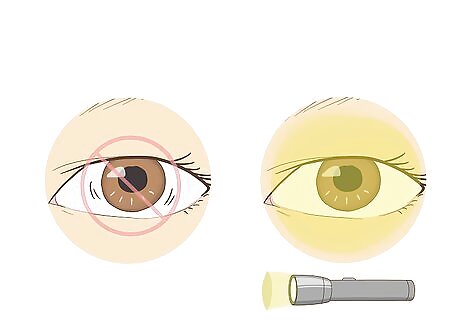
See if the eyes are still and dilated. Gently open one of the person’s eyes (if they aren’t open already). If the person has died, you won’t see any movement of the eyes. If you have a flashlight handy, shine it in their eyes to see if the pupils get smaller. After death, the pupils will typically stay open and enlarged even under bright light. Keep in mind that there are other things that can also cause unresponsive pupils, such as certain types of drugs or damage to the nerves that control pupil and eye movement. Don’t assume the person is dead unless you also see other signs, like a lack of breathing or pulse.
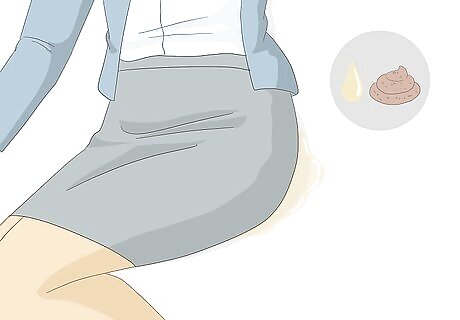
Watch for a loss of bladder and bowel control. When a person dies, the muscles that control their bladder and bowels relax. If the person suddenly wets or soils themselves, this may be a sign of death. Sudden incontinence can also be a sign of other conditions, such as nerve damage or a stroke.




















Comments
0 comment